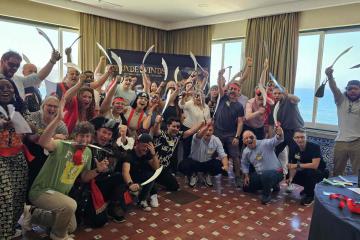In the modern business world, teams are increasingly composed of diverse groups of people. Men and women, individuals from various cultural backgrounds, young and old, all come together to harness collective capacities. However, the mere act of bringing different people together does not guarantee high performance; this necessitates inclusive leadership. Inclusive leadership ensures that all team members feel respected, treated fairly, valued, and most importantly, that they belong and are inspired.
Recent research has revealed that inclusivity is not just a nice-to-have for teams but a direct performance booster. Teams with inclusive leaders are 17% more likely to see themselves as high performers, 20% more likely to make high-quality decisions, and 29% more likely to report effective collaboration. Furthermore, a 10% improvement in the perception of inclusion was found to increase attendance at work by almost 1 day per year per employee, thereby reducing the cost of absence.
The 6 Behaviors of Inclusive Leaders
But what can leaders do concretely to be more inclusive? This research identified six specific behaviors that distinguish inclusive leaders from others:
1. Visible commitment: They express authentic commitment to diversity, challenge the status quo, hold others accountable, and make diversity and inclusion a personal priority.
2. Modesty: They are modest about their abilities, admit mistakes, and create space for others to contribute.
3. Awareness of bias: They show awareness of personal blind spots and flaws in the system and work hard to ensure meritocracy.
4. Curiosity about others: They show an open mindset and curiosity about others, listen without judgment, and try to understand those around them with empathy.
5. Cultural intelligence: They are aware of the cultures of others and adapt as needed.
6. Effective collaboration: They empower others, consider diversity of thought and psychological safety, and focus on team cohesion.
These behaviors may seem obvious, similar to those important for good leadership in general. However, the difference between assessing and developing good leadership in general and inclusive leadership in particular lies in three specific insights.
First, most of the leaders in the study were unsure whether they were seen as inclusive. Second, an inclusive leader is judged based on specific assessments, not averages. Finally, inclusive leadership is not about showing grand gestures every now and then but about regular, small-scale comments and actions.
Take a step towards inclusive leadership yourself
What leaders say and do greatly impacts others, but research indicates that this effect is even stronger when they lead diverse teams. Subtle words and acts of exclusion by leaders or ignoring the exclusive behavior of others easily reinforce the status quo. It takes energy and time to create an inclusive culture, and that starts with leaders paying much more attention to what they say and do daily and, if necessary, making adjustments.
To get started there are four ways for leaders to get started:
1. Know your inclusive leadership shadow: Seek feedback on how you're perceived as inclusive, especially from people different from you. This will help you see your blind spots, strengths, and areas for development.
2. Be visible and vocal: Tell a compelling and explicit story about why inclusivity is important to you personally and the company.
3. Consciously seek out difference: Give people outside your network the opportunity to speak up, invite different people to a dialogue and maintain contact with a wider network.
4. Monitor your impact: Look for signs that you're making a positive impact. Do people ask you to act as a role model? Does a more diverse group of people share ideas with you? Do people like to work with you? These are all signs that you're making a positive impact.
Is inclusive leadership also for non-leaders?
Inclusivity is not just about leaders; it's about all of us. By shifting the focus from top-down to bottom-up, we can all contribute to an inclusive culture. Instead of just looking at what leaders can do, we can all ask ourselves what we can do to promote inclusion. In our team-building activities, we strive to create a safe environment where everyone can practice human skills such as empathy, collaboration, and cultural intelligence. These skills are essential for inclusivity at all levels of the organization, and our activities provide the ideal opportunity to develop them.
With inclusive leadership and the development of human skills as central pillars, we can jointly build stronger, more inclusive teams and organizations. Are you curious about how our activities can actively contribute to this? Please feel free to contact us.





